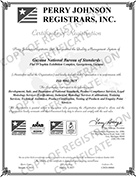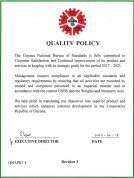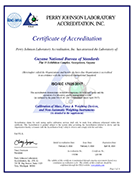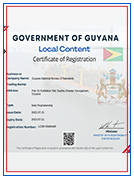[vc_row][vc_column][vc_empty_space height=”120px”][/vc_column][/vc_row][vc_row css=”.vc_custom_1500883654749{margin-bottom: 45px !important;}”][vc_column css=”.vc_custom_1503301727098{padding-bottom: 30px !important;}” offset=”vc_col-lg-6 vc_col-md-6″][vc_empty_space height=”13px”][vc_single_image image=”313″ img_size=”full” css=”.vc_custom_1537205750870{margin-top: 100px !important;border-top-width: 100px !important;padding-right: 30px !important;}” el_class=”about-image”][/vc_column][vc_column css=”.vc_custom_1536096611756{margin-top: 130px !important;padding-top: 30px !important;padding-bottom: 30px !important;}” offset=”vc_col-lg-6 vc_col-md-6″]
Standardisation Department
Objective
To promote standardisation in the production of goods and services for the advancement of local and foreign trade.
How National Standards Are Developed
A request for the development of a standard is made to the Guyana National Bureau of Standards (GNBS) by filling out and submitting a proposal form. This proposal form is submitted to the National Standards Council for approval. Upon approval, it is assigned to one of the Technical Committees so that work can be started. If there is no Technical Committee established to deal with this new standard proposal, one is established.
The Technical Secretary assigned to the Committee will prepare draft for committee members to review and deliberate on. When this draft has been approved by the committee, it is issued for Public Comments for a period of three months. The public is informed by notices published in the media, and copies of the standard are circulated to stakeholders.
 If comments are received, the committee meets again to review and incorporate these comments, resulting in the preparation of a Final Draft Standard.
If comments are received, the committee meets again to review and incorporate these comments, resulting in the preparation of a Final Draft Standard.
The Final Draft Standard is submitted to the National Standards Council for approval. Once approved, the standard is edited, assigned a GYS number, published and made available for sale.
If compliance with the standard is deemed necessary for the health and safety of consumers, the National Standards Council may recommend to the Minister of Business that the standard be made mandatory/compulsory. Once approved by Cabinet, it is sent to the Attorney General’s office for vetting and is published in the Official Gazette.
A National standard is reviewed and updated every five years in an effort to reflect the latest developments in safety and technology, as well as current realities in the marketplace and consumer demands. Amendments to, and revisions of standards require the same procedure as is applied to the preparation of the original standard.
[/vc_column_text][vc_empty_space height=”15px”][/vc_column][/vc_row][vc_row][vc_column][vc_separator color=”custom” style=”double” el_width=”60″ accent_color=”#f4f4f4″][vc_empty_space][/vc_column][/vc_row][vc_row][vc_column]
Guidelines for completing a proposal form
The scope should indicate clearly the coverage of the proposed standard and, if necessary, exclusions.
Purpose and justification should give specific aims of the standardisation activity with emphasis on the aspects of standardisation to be covered (terminology, characteristics, sampling, testing, packaging and labelling, etc.) and problems the standard is expected to solve. It should indicate main interests to benefit from the standard (industry, consumers, trade or Government). Under this item the feasibility, timeliness and or urgency of the project should be mentioned and specific benefits to be attained (based on data on product volume or value of trade) clearly; indicated. If the standardisation activity is likely to be the subject of regulations this should be mentioned.
Under relevant documents, existing standards and regulations should be listed. If the proposer has already prepared a draft or considers that an existing, well-established document can serve as a basis for the standardisation project, he/she should indicate this under preparatory work.
Under liaison organisations a list should be given of organisations, and external and internal bodies, with which cooperation and liaison should be established.
Application Form: Proposal Form For New Work Item
Completed form shall be sent to:
GUYANA NATIONAL BUREAU OF STANDARDS
Flat 15 Sophia Exhibition Complex, Sophia
Georgetown, Guyana
Telephone Nos. : (592) – 219-0065, 219-0066
Fax No. : (592) – 219-0070
E-mail : standards@gnbsgy.org
Technical Committees of the Guyana National Bureau of Standards
Technical Committee 1 (TC 1) – Agriculture
Sub-Committees – SC 1 – Livestock
SC 2 – Rice
SC 3 – Crops
SC 4 – Fertiliser
SC 5 – Organic
Technical Committee 2 (TC 2) – Foods
Technical Committee 3 (TC 3) – Chemical
Technical Committee 4 (TC 4) – Electro technical Engineering
Technical Committee 5 (TC 5) – Legal Metrology
Technical Committee 6 (TC 6) – Mechanical Engineering
Technical Committee 7 (TC 7) – Consumer Products
Technical Committee 8 (TC 8) – Cosmetics and Medical Devices
Technical Committee 9 (TC 9) – Laboratory Management
Technical Committee 10 (TC 10) – Civil Engineering
Technical Committee 11 (TC 11) – Safety
Technical Committee 12 (TC 12) – Tourism
Technical Committee 13 (TC 13) – Wood Products
Sub-Committee – SC 1 – Furniture
Technical Committee 14 (TC 14) – Environment
Technical Committee 15 (TC 15) – Management Systems[/vc_column_text][vc_empty_space height=”43px”][/vc_column][/vc_row]





